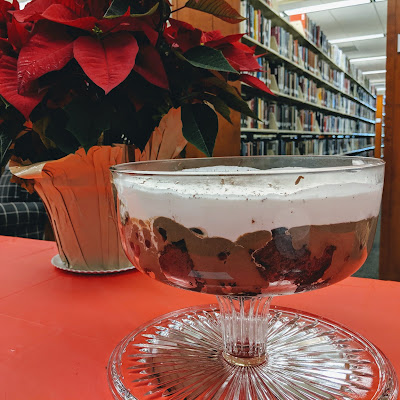As fall approaches, but fall temperatures do not, I find myself drawn more to caramel and salted caramel and molasses than the usual pumpkin and apple. Last week I posted a molasses quick bread recipe, and that one was a bit lighter than this one, which approaches a fancy gingerbread with the glaze. It comes from Dorie Greenspan's
Everyday Dorie.
Molasses Coffee Cake
For the cake:
1 1/2 cups (204 grams) all-purpose flour
1 tsp baking powder
1/2 tsp baking soda
1/2 tsp fine sea salt
1 tsp ground ginger
1 tsp Chinese five-spice powder
1/2 tsp ground cinnamon
1/4 tsp freshly ground pepper
1 stick (8 tbsp/4 oz/ 113 grams) unsalted butter, at room temperature
2/3 cup (132 grams) packed brown sugar
1/3 cup (80 ml) unsulfured molasses
1 large egg, at room temperature
1 tsp pure vanilla extract
1/3 cup (80 ml) hot coffee or espresso (can be made with instant coffee or espresso powder)
For the coffee glaze (optional):1 1/2 tsp instant espresso powder
1 tbsp boiling water
5 oz (142 grams) best-quality white chocolate, finely chopped
1/3 cup (80 ml) heavy cream
2 tsp unsalted butter, cut into 2 pieces, at room temperature
Whipped cream, for topping
Center a rack in the oven and preheat it to 350 F. Butter a 9-inch round cake pan that's at least 2 inches high (use a springform if you don't have a regular pan that's tall enough), fit a round of parchment paper into the bottom of the pan, butter the paper and dust the interior with flour; tap out the excess.
Whisk together the flour, baking powder and soda, salt, ginger, five-spice powder, cinnamon, and pepper.
Working in a stand mixer fitted with a paddle attachment, or in a large bowl with a hand mixer, beat the butter and brown sugar together on medium speed for about 2 minutes. Add the molasses and beat for 2 minutes more, scraping the bowl as needed. Add the egg and beat for 2 minutes, then beat in the vanilla. Turn the mixer off, add the flour mixture and pulse to begin incorporating it. Then beat on low speed only until the dry ingredients disappear into the batter. With the mixer on low, add the hot coffee, again mixing only until it is incorporated. Scrape the batter into the pan and swivel the pan to even it.
Bake for 28 to 33 minutes, until the cake is beautifully browned and has risen uniformly. It will pull away from the sides of the pan if gently tugged and a tested inserted into the center of the cake will come out clean. Transfer the pan to a rack and let the cake rest for 5 minutes, then run a blunt knife around the sides of the cake. Turn the cake out onto the rack, gently peel off the parchment, invert onto another rack and cool to room temperature; or, if you used a springform, simply remove the ring. The cake may develop a little dip in the center - that's its personality.
To make the optional glaze: Dissolve the instant espresso in the boiling water. Put the chopped chocolate in a small heatproof bowl. Bring the cream to a boil (you can do this in a microwave oven), stir in the espresso extract that you made, and pour the cream over the chocolate. Let sit for 30 seconds and then, using a whisk or small heatproof spatula, stir until the mixture is smooth. Add the butter one piece at a time, stirring until it is melted and incorporated.
Set the cake, on the rack, on a piece of foil to catch drips. Pour as much of the glaze as you want over the cake and use a long spatula or a table knife to spread it.
Put the cake in the refrigerator for about 20 minutes to set the glaze, then return it to room temperature before serving. Pass any remaining glaze at the table.
Notes from JennyBakes:
-I don't have a tall enough round pan, something that keeps happening (my old springform won't close) so I used a 9" square pan and thought it was fine!
-I bet you could play with the spices in this. Don't let not having 5-spice powder stop you!
-I feel like the dip in the middle is a failure of recipe but just made it as described first. Next I'll need to do a little research. More structure, maybe? Another egg?
-I didn't take the cake out as fast as it recommends but had no problems, unlike some true gingerbreads that stick like crazy
-Do not use white chocolate CHIPS for this recipe. I speak from glompy experience. I also misread the amount of cream in the glaze so mine was a little rubby.
-I used leftover coffee from breakfast (still hot) for the cake, but used espresso powder in the glaze. I didn't bother making an extract because I knew it would dissolve just fine in the hot cream.


























